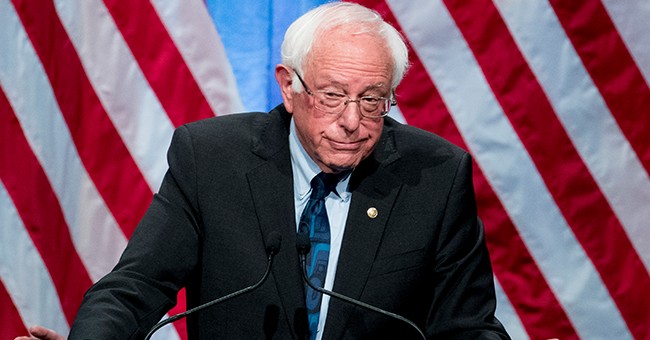By Dean Clancy
Sen. Bernie Sanders (I-VT) and his allies are plotting the biggest expansion of government-run health care since the passage of the Affordable Care Act (ACA), also known as Obamacare, in 2010.
If recent news reports are accurate, the proposed health care expansion would be more than 60 percent more expensive than the ACA.
The initial 10-year cost of the ACA was estimated at $940 billion; the comparable figure for Sanders’ health care plan is about $1.6 trillion.
The tragedy is that much of the proposed expansion would come at the expense of Medicare, a program millions of seniors count on for their health care needs.
The proposal would greatly expand existing government health care programs, including Medicare, Medicaid, and the ACA, to the point where the government would control nearly all health care and put private health insurance out of business.
An Americans for Prosperity poll shows people from both sides of the political spectrum prefer a personal option for health care, which can offer better care at a lower cost than what government can do.
Single-Payer Dreams
Under the proposed essentially single-payer system, the government would pay for and thus control everything in health care. Because resources would be limited and bureaucracy is inefficient, access to doctors and therapies would inevitably be rationed and patients would languish on waitlists. There would be no room for consumer choice and competition to lower prices and expand access.
Many countries have adopted single-payer health care, and the melancholy results are well-documented. Canadians receive fewer cancer screenings than Americans do and have higher mortality rates than Americans for certain cancers. The median wait time in Canada for an MRI scan is more than two months, and it takes an average of five months to see a specialist in Canada.
Although Americans who can afford it enjoy access to 89 percent of new drugs, patients in Spain and Greece have access to only 14 percent because their governments deem most new drugs too expensive for the government to pay for.
Sanders’ Medicare Heist
Based on congressional leaders’ public announcement and subsequent news reports, the $3.5 trillion “infrastructure” plan making its way through Congress includes a few health-care-related provisions from Sanders’ plan.
The infrastructure plan includes $370 billion for new dental and vision benefits in Medicare. Another $165 billion would be spent to expand the ACA, $300 billion to expand Medicaid, and $400 billion to expand home health care in a way that would make it easier for unions to organize workers.
The Sanders plan proposes to pay for this spending by fixing drug prices in Medicare, budget tricks, and $500 billion in new debt.
Although new and expanded benefits may sound enticing, Sanders and his allies are setting up Medicare for a financial crisis requiring huge tax hikes, benefit cuts, or both.
Medicare Over the Brink
There are approximately 61 million people enrolled in Medicare. Lowering the eligibility age to 60, as Sanders wants, would add nearly 23 million non-seniors.
According to the Congressional Budget Office (CBO), the Medicare Trust Fund is projected to go broke in 2026, just five years from now.
In the absence of sensible offsetting reforms, this huge expansion would hasten the exhaustion of the Medicare trust fund, leading to significant benefit cuts, massive tax hikes, more deficit spending, or all three. Furthermore, almost all these 23 million potential new beneficiaries already have private health insurance. Adding them to Medicare would shrink the employer-based health care system, potentially destabilizing it.
Expanding Medicare eligibility would certainly reduce the net income of doctors and hospitals: Medicare typically pays 25 to 40 percent less than commercial insurers do. Such a large pay cut for providers would make it harder for Medicare patients to see the doctors of their choice in a timely way.
Expanding Medicare Benefits
Adding new dental, vision, and hearing benefits would be costly: $370 billion over 10 years. It could also lead to higher Part B premiums for seniors. Under Medicare, Part B premium amounts are calculated based on overall program spending. If Congress adds new benefits, spending will go up, and premiums will rise with it.
These benefits are unnecessary for several reasons. Medicare already covers serious medical problems affecting the eyes, teeth, and ears. The expansion would only add coverage for more peripheral items, such as routine checkups, cleanings, dentures, eyeglasses, hearing aids, and the like. Second, seniors already have access to dental, vision, and hearing benefits through the popular Medicare Advantage option within Medicare.
The most ominous part of Sanders’ plan is giving bureaucrats the power to determine prices for drugs and treatment, which would lead to 300 fewer new drugs being approved over the first 10 years, according to the CBO.
Spending: The Big Picture
This proposed expansion of government control over health care is not occurring in a vacuum. It is part of a massive increase in government spending that threatens great economic harm. These health care changes in the $3.5 trillion “infrastructure” bill come on the heels of the $4 trillion already spent dealing with the COVID pandemic.
If lawmakers fail to take this threat seriously, seniors and taxpayers will suffer and America will be one step closer to a single-payer system that forces patients to give up the health care they like and saddles future generations with trillions in new debt.
The debate comes down to one question: Who do you trust with your health care? The government? Or your own doctors?
An Americans for Prosperity poll shows people prefer a personal option for health care, which can offer better care at a lower cost.
Dean Clancy (DClancy@afphq.org) is a senior fellow for health policy at Americans for Prosperity. A version of this article appeared on the AFP blog on August 4, 2021. Reprinted with permission.
This article was updated August 31, 2021.
Internet info:




















